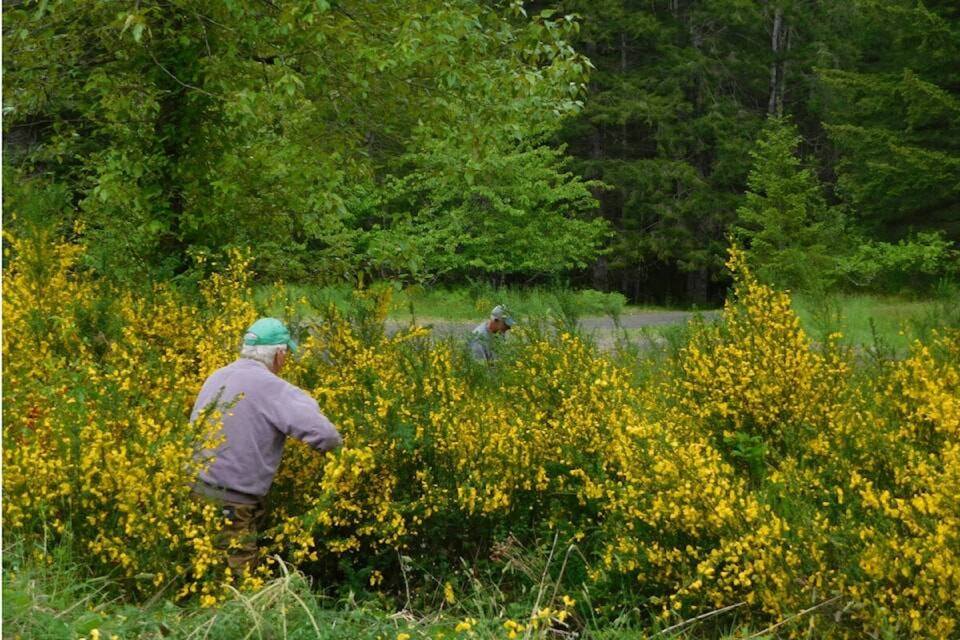BC Hydro is willing to work with landowners along its transmission lines on Vancouver Island to help remove Scotch broom, but the Crown corporation said it is limited as to how much it can do in the ongoing campaign to stop the alarming spread of the invasive species on the Island, according to a spokesman.
Speaking to North Cowichan’s council at its meeting on Feb. 21, BC Hydro’s manager of community relations Ted Olynyk said that despite the fact that the power company’s transmission lines criss-cross Vancouver Island, it doesn’t own the land on which they are located.
He said BC Hydro is aware of the proliferation of Scotch broom on those properties and it will work with landowners who want to remove it, but not all do and that drastically limits the success of its removal from individual properties.
RELATED STORY:
“If one property owner wants to deal with it, but the adjacent land owner doesn’t want to do anything about it, we can do all this work and it will just be reseeded next year,” Olynyk said.
“We’re not going to put money into an area if that’s the case. It has to be a collective effort with the province, local agencies and organizations working together to try and deal with Scotch broom.”
A study by the Invasive Species Council of BC concluded that Scotch broom is the invasive species that is causing the greatest harm to species at risk in the province.
Broom spreads densely and rapidly and grows huge quickly, crowding out native trees and plants, and also negatively impacts agricultural production because it’s toxic to grazing animals and plant life as it displaces grasses and foods that animals eat.
RELATED STORY:
Scotch broom, which is mostly limited to the Island and is only now moving onto the mainland, is also very flammable, and those who are looking to stop its spread, including the Broombusters Invasive Plant Society, have said that allowing it to grow densely over the extensive network of B.C. Hydro’s transmission lines from Campbell River to Victoria creates a dangerous pathway for wildfires to spread quickly across the Island.
Joanne Sales, executive director of the Broombusters Invasive Plant Society, said BC Hydro does not get their facts quite right.
She said that the company maintains that it is worried about the broom seeds from adjacent properties, but the broom is on the adjacent properties because they were seeded from the broom that filled up the BC Hydro lines.
“But broom seeds are viable in the soil for a minimum of 30 years, possibly up to 70 years, so the seeds from one year from the adjacent property are insignificant,” Sales said.
“And the adjacent landowners may want to clear their broom, but what is the use if BC Hydro doesn’t? So, nothing is done. Each one is waiting on the other one. BC Hydro is the cause of the proliferation, so they should be setting the example and connecting with adjacent property owners and offering to cut the broom.”
Sales asks who wants to have Scotch broom, a known fire hazard, on their property?
“It’s hopelessness on the part of the landowners; not a desire to have their private property covered with an alien invasive plant,” she said.
For more information on the society, check out .



